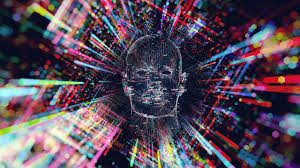Artificial Intelligence (AI) has become a pre-curser to digital transformation. The adoption way of AI needs a very much idea about the system to advance in light of the progressively changing technology world.
The manual for executing AI isn’t simple, here is an outline to manage:
- Understanding Artificial Intelligence
Artificial Intelligence defined in business are algorithms that emulate human intuition. AI brings pattern recognition and predictive maintenance from big data to assist organizations with settling on key choices.
- Decoding AI for the Enterprise
- Reactive AI (Machine Learning AI)
Algorithms utilized in this early kind of AI are reactive and lack memory. This infers for particular information, the yield will consistently be the equivalent. This sort of AI is effective for pattern recoginition and simple classification of tasks.
- Limited Memory Machines (Deep Learning AI)
This kind of machine “deep learning” is modified to deal with complex grouping errands and utilize historical data to make forecasts. it is also capable of autonomous driving
- Theory of Mind (Reinforcement Learning AI)
This is equipped for understanding human goals and thinking. Reinforcement Learning AI can forget its past calculations and re-figure out how to convey customized results-based business necessities. It is also known as Artificial General Intelligence(AGI). it can contextualize and sum up data, and extrapolate information to a wide set of problems.
- Self-aware AI (Super Intelligent AI)
As the name proposes it knows about itself and is also known as artificial superintelligence AI. It is an AI at par with human general insight and in the future might be equipped for far outperforming human comprehension by making an unrivaled savvy variant of itself.
- Significance of AI to the Enterprise
AI and big data assume a harmonious job in 21st-century business achievement giving organizations a serious edge, improved client care, improved checking, quicker item advancement, decrease in blunders, and expanded adherence to consistent norms.
- Building AI Use Cases
AI has advanced into each business division, from marketing, finance, and HR to IT.
- banks are utilizing AI to robotize client support and smooth out back-office forms.
- Collaborative robots, aka cobots, work as an additional set of hands working nearby people in the manufacturing sector on assembly lines and in warehouses; processing plants to foresee support needs.
- The $5 trillion agribusiness industry is utilizing AI to diminish outstanding tasks at hand, compose creation information and yield more advantageous harvests.
- Tending to AI challenges
- AI Errors – human blunder, mistakes in the algorithm
- Unethical and unintended practices
- AI adoption in the Enterprise
Recent reports suggest that AI arrangements have a promising route ahead. As per research evaluates, the normal number of AI ventures per organization will develop to 35, a 250% expansion over the normal of 10 tasks anticipated for 2020.

